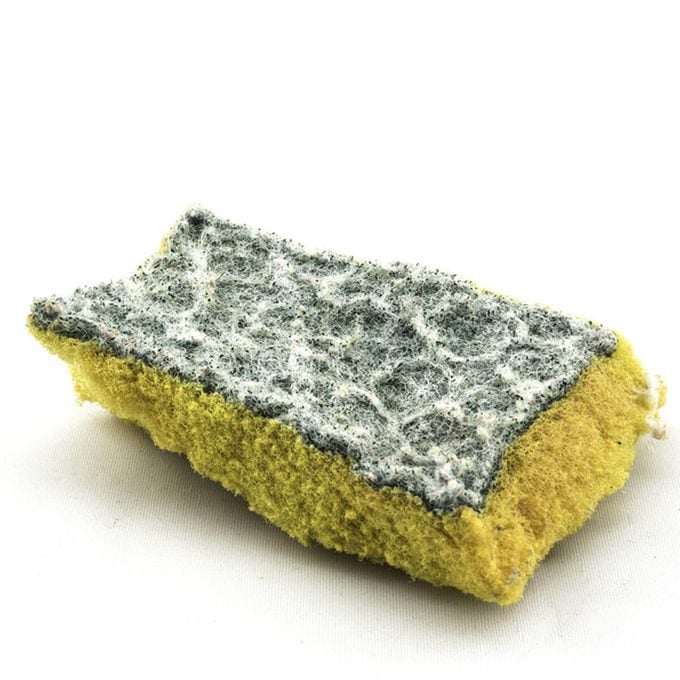Cleaning a Sponge to Avoid That Smell
Updated: Apr. 17, 2024
A kitchen sponge can quickly become the source of all kinds of unwanted smells in your kitchen. Here's how to keep your sponge clean and odor-free.

The kitchen sponge is a well-used cleaning tool. From your dishes to your counters, it soaks up a lot of dirt and leaves your kitchen sparkling. That’s why it should come as no surprise that there is a hefty amount of bacteria in the sponge.
In fact, one study published in Scientific Reports investigated how many critters are living in used kitchen sponges, and found some disturbing results. “We found 362 different species of bacteria, and locally, the density of bacteria reached up to 45 billion per square centimeter,” says Markus Egert, a microbiologist at Furtwangen University in Germany, who led the study.
The research revealed that there can be spots on your kitchen sponge with just as high concentrations of bacteria as in a toilet. And while that may cause you to throw your sponge away immediately, you may want to consider an alternative: cleaning it! You should be cleaning your sponge daily, and there are many ways to do it.
The most effective and easy way to clean your sponge is to douse it in bleach. You’ll want to soak it for at least five minutes in a solution of 3/4 cup bleach to 1 gallon of water, then squeeze and rinse it out. You can also microwave a damp sponge for about a minute.
Another option is to soak your sponge overnight in a mixture of 1 cup hot water, 1/2 cup white vinegar and 3 tablespoons salt. When you wake up, rinse and squeeze the sponge out until all of the liquid has been emptied. And remember, after each use, wring your sponge out well and store in a dry location to stop bacteria growth in its tracks!